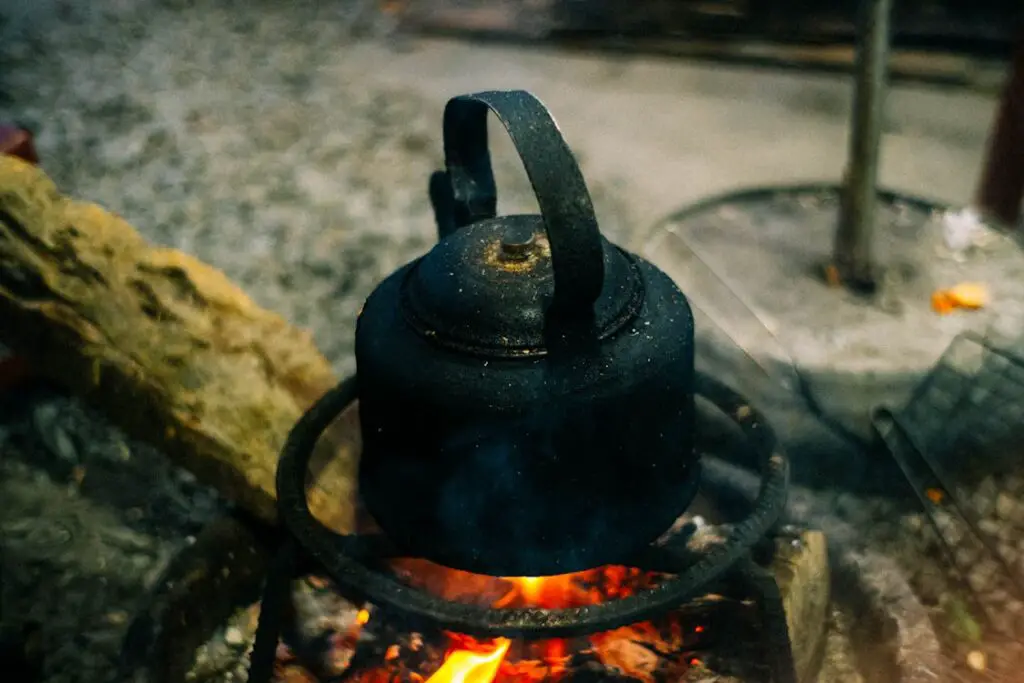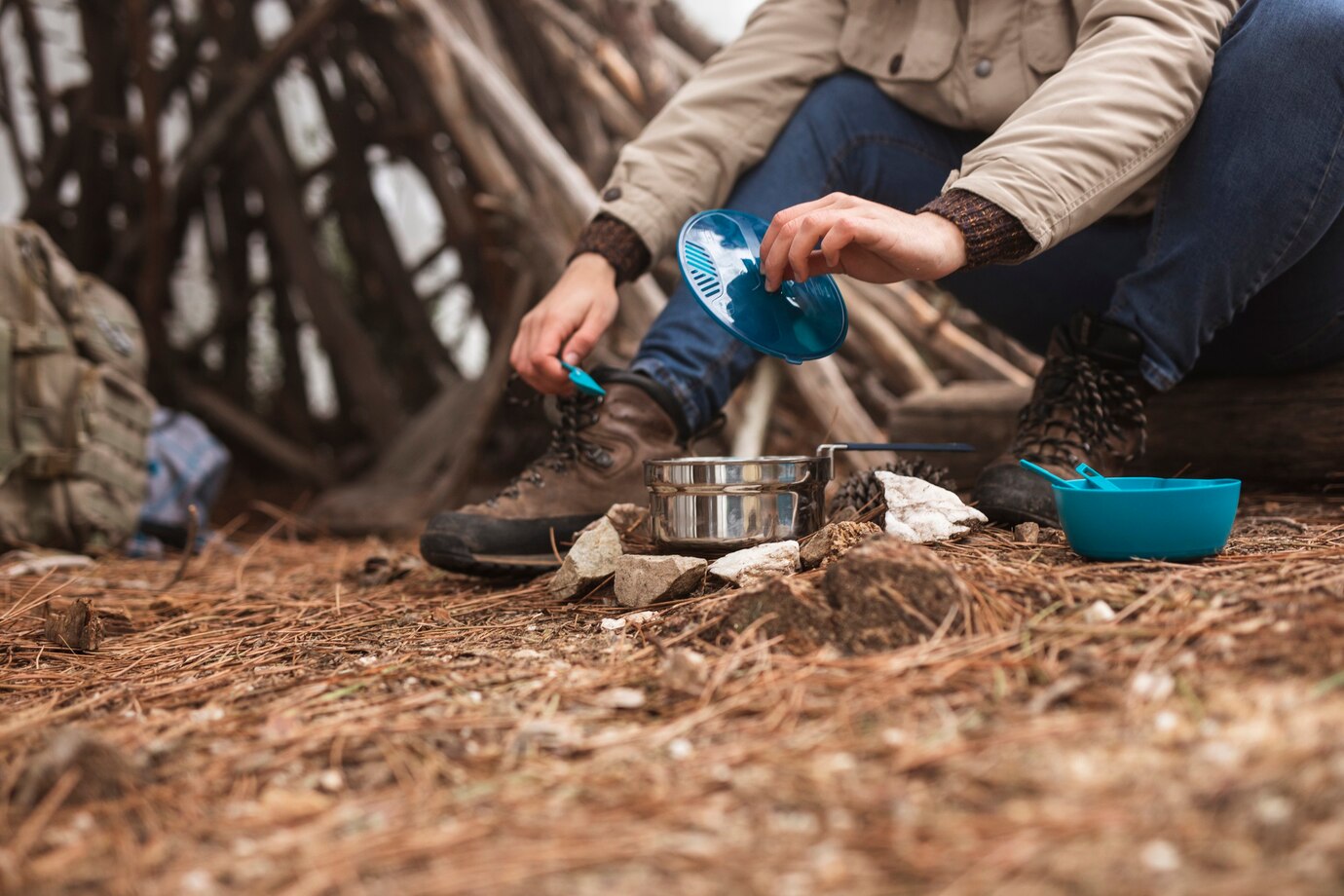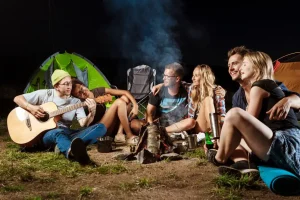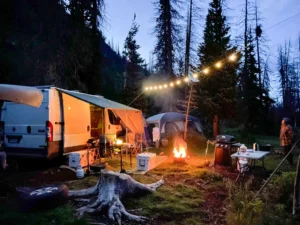How to Boil Water When Camping: A Safe Guide for Beginners

Boiling water while camping isn’t as simple as using your kitchen kettle. My first camping trip taught me this. The Jetboil Flash amazed me because it could heat water in just 1-2 minutes – much faster than other ways.
The right method for your situation is vital. My wilderness trips have given me several reliable options. A standard camping kettle needs 4-6 minutes to boil water. Gas camping stoves usually take about 5 minutes. Traditional campers might prefer using a campfire that takes 10-20 minutes, depending on the setup.
This piece will teach you everything about safely boiling water while camping. You’ll learn about choosing the right equipment and understanding how altitude affects boiling times. My tips will help you find the quickest way for your outdoor adventures, whether you’re new to camping or ready to upgrade your gear.
Essential Camping Equipment for Boiling Water
Your camping water-boiling experience depends on picking the right equipment. We needed a reliable heat source and the right cookware to get started.
Canister stoves are quick and efficient. The MSR PocketRocket 2 boils water in just 3.5 minutes. On top of that, integrated stove systems like the Jetboil Flash work even faster and can bring water to a boil in 100 seconds.
The right cookware material makes a big difference. Here’s what you need to know about your options:
Cookware Material Comparison:
Material
- Titanium
- Aluminum
- Stainless Steel
Pros
- Ultra-lightweight, durable
- Affordable, even heating
- Highly durable, scratch-resistant
A stainless steel pot with 750ml to 1 liter capacity works best. Look for these helpful features:
Fold-away handles for compact storage
Fitted lid with strainer holes
Heat-resistant grips
You’ll also need these accessories:
Windscreen for fuel efficiency
Pot support for stability
Heat-resistant utensils to protect non-stick surfaces
Liquid fuel stoves work better in cold weather or at high altitudes. These stoves give you more fuel options and are a great way to get reliability on longer trips.
Pack a backup ignition source since built-in igniters can fail. A dedicated water container helps cut down trips to your water source.
Safe Water Sources and Preparation
Safe water is essential for camping and needs proper planning. Streams and rivers with flowing water make better choices than still water sources
Water Source Assessment Guide:
Pick water that’s flowing rather than standing
Find spots away from busy areas
Get water as close to its source as possible
Watch out for signs of wildlife
The sort of thing I love about water safety is that clear water isn’t always safe water. Water sources might contain several contaminants:
Bacteria (E. coli, Salmonella)
Protozoa (Giardia)
Viruses (norovirus, hepatitis A)
Parasitic worms
Water Source Type
- Moving Streams
- Lakes/Ponds
- Natural Springs
Pros
- Better oxygenation, Less contamination risk
- Easy access, Abundant supply
- Often cleaner, Fresh source
Boiling stands out as the most reliable way to purify water. Water should reach a rolling boil for 1 minute at sea level, or 3-5 minutes at higher altitudes. This kills protozoa, pathogens, and viruses effectively.
These safety tips are vital to remember:
- Camp at least 200 feet away from water sources
- Get water from the clearest surface area
- A bandanna or cloth helps remove larger debris
- Treat all water before drinking, whatever it looks like

Step-by-Step Guide to Boiling Water While Camping
A proper camping stove setup is the foundation of safe water boiling. Choose a level surface at least 10 feet away from flammable materials. Good ventilation prevents carbon monoxide buildup.
These three camping stoves offer excellent safety features:
Your filtered water pot should sit directly on the burner after setup. Water needs a one-minute rolling boil at sea level. Higher altitudes require 3-5 minutes of boiling time to eliminate all contaminants.
A thick leather glove or heat-resistant utensil helps remove the pot safely. The water should cool slightly before use because boiling water can cause severe burns.
Final Thoughts – Boiling Water When Camping
Boiling water at a campsite takes more planning and preparation than using your kitchen kettle. My camping adventures have taught me that the right equipment and water source make all the difference to your safety and efficiency.
Safety should be your top priority. This means picking clean water sources and keeping a safe distance from anything that might catch fire. Quick and safe results depend on the right gear – a reliable stove and proper cookware are essential.
Your camping location’s altitude affects boiling times and temperatures, so you need to adjust your approach accordingly. My go-to setup has a stainless steel pot with a fitted lid and a dependable MSR PocketRocket 2 stove that balances portability and performance exceptionally well.
Getting water to boil at your campsite comes down to good planning and execution. A quick-boiling Jetboil or traditional campfire method will work great as long as you stick to safety guidelines and take care of your gear. This ensures you’ll have clean, safe drinking water throughout your outdoor adventure.
Practice your chosen method at home before you head into the wilderness. This builds your confidence and helps you get familiar with your equipment, which makes your camping experience more enjoyable and stress-free.



